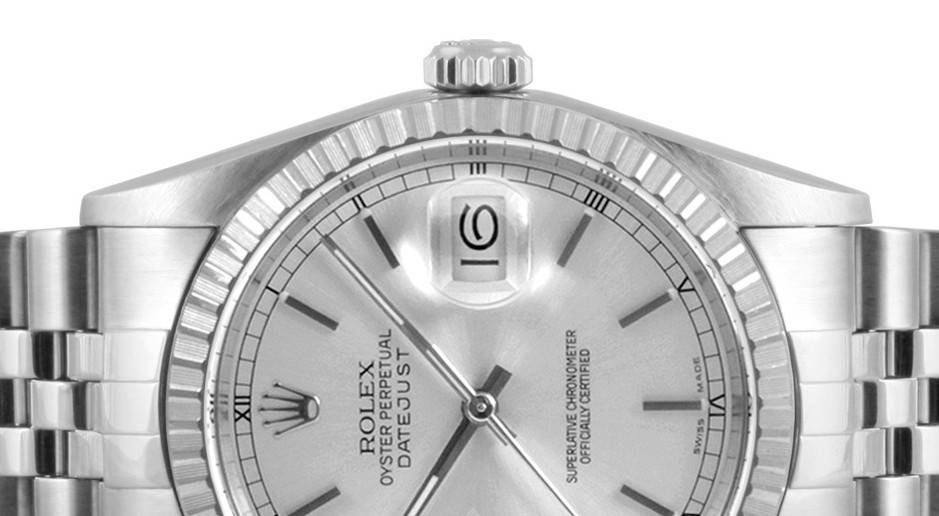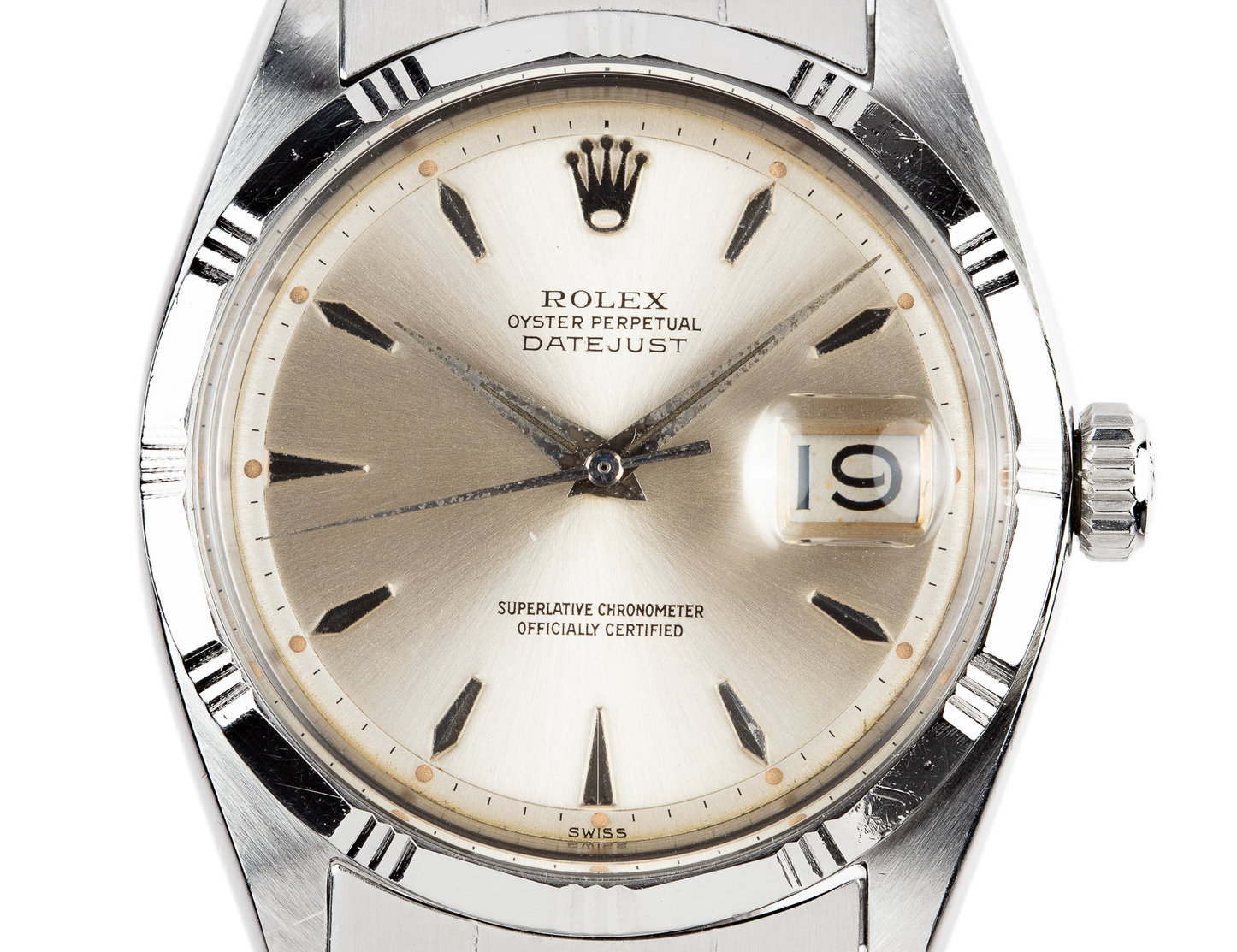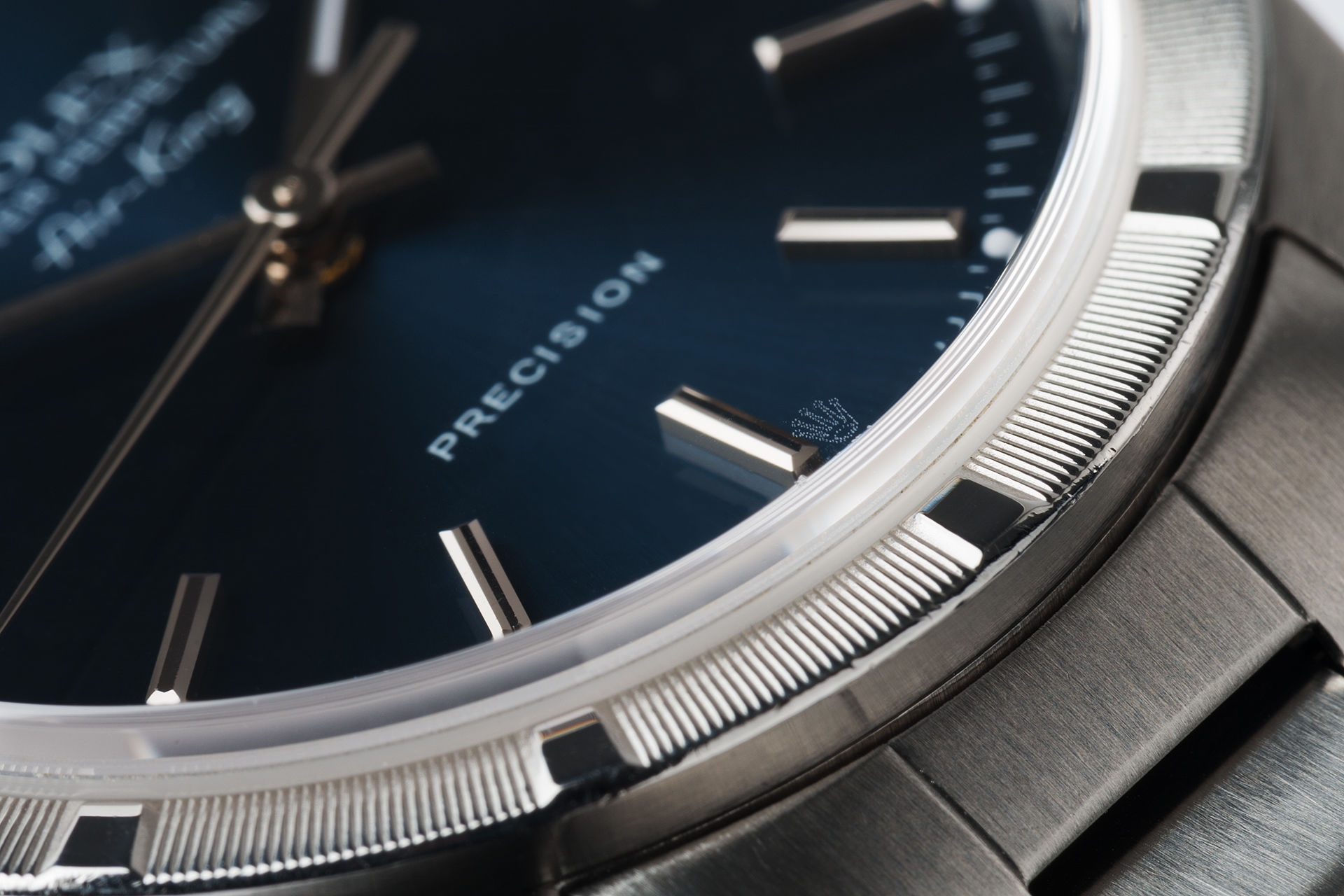
Rolex Engine Turned Bezel Complete Guide and History
The bezel of a Rolex watch (the ring around the dial) is an important part of the watch’s aesthetics and identity. Rolex offers quite a wide selection of bezel types in its collection of watches, including fluted bezels, smooth bezels, bidirectional rotating bezels, and unidirectional bezels, to mention a few.
Furthermore, Rolex also makes its bezels in different types of materials.
Throughout the years, Rolex has made numerous bezel variations that are now discontinued. The engine-turned bezel is one of them.
The engine-turned bezel is a style of the bezel that is sometimes referred to as guilloché. Engine turning is a method of creating decorative patterned grooves in the metal. Unlike what the name may cause some people to believe, the engine-turned bezel does not rotate. Instead, it is fixed. The turn part is simply a term for the way it is machined.

The engine turned bezels have a particular pattern of groves that are repeated and contrasted by polished elements. The engine-turned bezels are made in a machine that achieves this repetitive effect.
The primary reason why the engine turned bezel style is relatively unknown is that it has been discontinued by Rolex for some years now. Furthermore, it hasn’t been widely popular as the market has favored the fluted bezel, which looks similar, but still more elegant and refined. Rolex no longer makes this style of the bezel, and probably won’t in the future either, but the last model to feature this bezel is the Oyster Perpetual Date reference 115210.
The engine turned bezel can be found on the Oyster Perpetual Date, Air-King, Oyster Perpetual, and Datejust.
Rolex engine-turned bezel variants
To make things more complex, Rolex has made several different engine-turned bezel styles throughout the years.
Normally, the bezel is only called ”engine turned” but then there is also what is known as Finely Engine Turned bezel which is what you find below:

Furthermore, the regular type engine-turned bezel looks very similar to the fluted bezel for the untrained eye. Because it is made in stainless steel, it is more affordable than the precious metal counterpart. Furthermore, it allows you to have a decorated bezel, but without the flashy and shiny luster of the fluted version.
The most common version is this:

Rolex engine-turned bezel materials
A common misconception is that the engine-turned bezel was only made of stainless steel. This is, however, not completely true. Whilst most of the bezels are made in stainless steel, it was also made available in yellow gold.
As such, if you see a white metal engine-turned bezel, it is made of stainless steel. This is different from the fluted bezel which is exclusively made of precious metal. Despite the fact that the bezel type is relatively rare, it isn’t collectible. In fact, the fluted bezel versions are quite affordable in comparison to other bezels, but this could also have something to do with the fact that are used in rather common and generic models.
Conclusion
The engine turned bezel from Rolex is different and relatively uncommon. It is a type of bezel that is perfect for you if you want a decoration bezel that adds a nice touch to the watch, but does so in a toned-down and non-flashy way.




